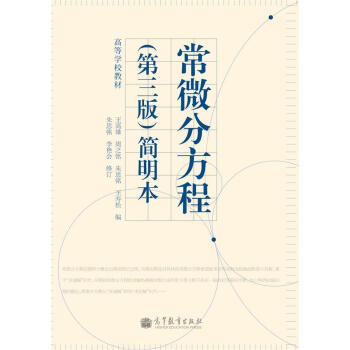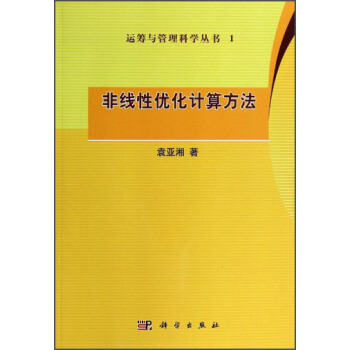![超弦理論(第1捲) [Superstring theory Vol.1]](https://pic.windowsfront.com/10096463/cd43ecc6-13b5-4403-900e-68468863fe9a.jpg)

具體描述
內容簡介
Recent years have brought a revival of work on string theory, which has been a source of fascination since its origins nearly twenty years ago.There seems to be a widely perceived need for a systematic, pedagogical exposition of the present state of knowledge about string theory. We hope that this book will help to meet this need. To give a comprehensive account of such a vast topic as string theory would scarcely be possible,even in two volumes with the length to which these have grown. Indeed,we have had to omit many important subjects, while treating others only sketchily. String field theory is omitted entirely (though the subject of chapter 11 is closely related to light-cone string field theory). Conformal field theory is not developed systematically, though much of the background material needed to understand recent papers on this subject is presented in chapter 3 and elsewhere.內頁插圖
目錄
Preface1 Introduction
1.1 The early days of dual models
1.1.1 The Veneziano amplitude and duality
1.1.2 High-energy behavior of the Veneziano model
1.1.3 Ramifications of the Veneziano model
1.2 Dual models of everything
1.2.1 Duality and the graviton
1.2.2 Unification in higher dimensions
1.2.3 Supersymmetry
1.3 String theory
1.3.1 The massless point particle
1.3.2 Generalization to strings
1.3.3 Constraint equations
1.4 String interactions
4.1 Splitting of strings
1.4.2 Vertex operators
1.4.3 Use of vertex operators
1.4.4 Evaluation of the scattering amplitude
1.4.5 The mass of the graviton
1.5 Other aspects of string theory
1.5.1 Gravitational Ward identities
1.5.2 Open strings
1.5.3 Internal symmetries of open strings
1.5.4 Recovery of the Veneziano amplitude
1.5.5 Comparison with QCD
1.5.6 Upitarity and gravity
1.6Conclusion
2 Free bosonic strings
2.1The classical bosonic string
2.1.1 String action and its symmetries
2.1.2 The free string in Minkowski space
2.1.3 Classical covariant gauge fixing and field equations
2.2 Quantization - old covariant approach
2.2.1 Commutation relations and mode expansions
2.2.2 Virasoro algebra and physical states
2.2.3 Vertex operators
2.3 Light-cone gauge quantization
2.3.1 Light-cone gauge and Lorentz algebra
2.3.2 Construction of transverse physical states
2.3.3 The no-ghost theorem and the spectrum-generating algebra
2.3.4 Analysis of the spectrum
2.3.5 Asymptotic formulas for level densities
2.4 Summary
3 Modern covariant quantization
3.1Covariant path-integral quantization
3.1.1 Fazideev-P0pov ghosts
3.1.2 Complex world-sheet tensor calculus
3.1.3 Quantizatlon of the ghosts3.2.1 Construction of BRST charge
3.2.2 Covariant calculation of the Virasoro anomaly
3.2.3 Virasoro, conformal and gravitational anomalies
3.2.4 Bosonization of ghost coordinates
3.3 Global aspects of the string world sheet
3.4 Strings in background fields
3.4.1 Introduction of a background spa~~e-time metric
3.4.2 Weyl invariance
3.4.3 Conformal invariance and the equations of motion
3.4.4 String-theoretic corrections to general relativity
3.4.5 Inclusion of other modes
3.4.6 The dilaton expectation value and the string coupling constant
3.5Summary
4 World-sheet supersymmetry in string theory
4.1 The classical theory
4.1.1 Global world-sheet supersymmetry
4.1.2 Superspace
4.1.3 Constraint equations
4.1.4 Boundary conditions and mode expansions
4.2 Quantization - the old covariant approach
4.2.1 Commutation relations and mode expansions
4.2.2 Super-Virasoro algebra and physical states
4.2.3 Boson-emission vertex operators
4.3 Light-cone gauge quantization
4.3.1 The light-cone gauge
4.3.2 No-ghost theorem and the spectrum-generating algebra
4.3.3 The GSO conditions
4.3.4 Locally supersymmetric form of the action
4.3.5 Superstring action and its symmetries
4.4 Modern covariant quantization
4.4.1 Faddeev-Popov ghosts
4.4.2 BRST symmetry
4.4.3 Covariant computation of the Virasoro anomaly
4.5 Extended world-sheet supersymmetry
4.5.1 The N = 2 theory
4.5.2 The N = 4 theory
4.6Summary
4.A Super Yang-Mills theories
5 Space-time supersymmetry in string theory
5.1 The classical theory
5.1.1 The superparticle
5.1.2 The supersymmetric string action
5.1.3 The local fermionic symmetry
5.1.4 Type I and type II superstrings
5.2 Quantization
5.2.1 Light-cone gauge
5.2.2 Super-Poincar
5.3.2 Closed superstrings
5.4 Remarks concerning covariant quantization
5.5 Summary
5.A Properties of SO(2n) groups
5.B The spin(8) Clifford algebra
6 Nonabelian gauge symmetry
6.1Open strings
6.1.1 The Chan-Paton method
6.1.2 Allowed gauge groups and:representations
6.2 Current algebra on the string world sheet
6.3Heterotic strings
6.3.1 The SO(32) theory
6.3.2 The Es x Es theory
6.4Toroidal compactification
6.4.1 Compactification on a circle
6.4.2 Fermionization
6.4.3 Bosonized description of the heterotic string
6.4.4 Vertex operator representations
6.4.5 Formulas for the cocycles
6.4.6 The full current Mgebra
6.4.7 The Es and spin(32)/Z2 lattices
6.4.8 The heterotic string spectrum
6.5 Summary
6.A Elements of Es
6.B Modular forms
7 Tree amplitudes
7.1 Bosonic open strings
7.1.1 The structure of tree amplitudes
7.1.2 Decoupling of ghosts
7.1.3 Cyclic symmetry
7.1.4 Examples
7.1.5 Tree-level gauge invariance
7.1.6 The twist operator
7.2 Bosonic closed strings
7.2.1 Construction of tree amplitudes
7.2.2 Examples
7.2.3 Relationship to open-string trees
7.3 Superstrings in the RNS formulation
7.3.1 Open-string tree amplitudes in the bosonic sector
7.3.2 The F1 picture
7.3.3 Examples
7.3.4 Tree amplitudes with one fermion line
7.3.5 Fermion-emission vertices
7.4 Superstrings in the supersymmetric formulation
7.4.1 Massless particle vertices
7.4.2 Open-string trees
7.4.3 Closed-string trees
7.4.4 Heterotic-string trees
7.5 Summary
7.A Coherent-state methods and correlation functions
Bibliography
Index
前言/序言
Recent years have brought a revival of work on string theory, which has been a source of fascination since its origins nearly twenty years ago.There seems to be a widely perceived need for a systematic, pedagogical exposition of the present state of knowledge about string theory. We hope that this book will help to meet this need. To give a comprehensive account of such a vast topic as string theory would scarcely be possible,even in two volumes with the length to which these have grown. Indeed,we have had to omit many important subjects, while treating others only sketchily. String field theory is omitted entirely (though the subject of chapter 11 is closely related to light-cone string field theory). Conformal field theory is not developed systematically, though much of the background material needed to understand recent papers on this subject is presented in chapter 3 and elsewhere.用戶評價
讀到《超弦理論(第1捲)》這個書名,我立刻就聯想到它所代錶的那個試圖統一一切物理規律的偉大設想。作為一名對宇宙奧秘充滿好奇的讀者,我一直關注著物理學界的前沿進展,而超弦理論無疑是其中最激動人心的部分之一。我希望這本書能夠為我揭示這個理論的核心思想,包括它是如何將粒子視為一維的弦,以及這些弦的不同振動模式如何對應著我們所知的各種基本粒子。我也期待書中能夠探討超弦理論在解釋宇宙起源、黑洞物理以及量子引力等問題上的潛力。雖然我知道超弦理論必然涉及到大量的數學工具,但我更看重的是它所能提供的物理圖像和概念性理解。我希望作者能夠用清晰的語言,將那些抽象的數學概念轉化為更易於理解的物理場景,讓我能夠領略到科學的魅力。這本書的齣現,對我而言,就像是打開瞭一扇通往全新物理世界的大門,讓我能夠一窺宇宙最深層的結構和運作方式,這本身就是一件令人興奮的事情。
評分我之所以會被《超弦理論(第1捲)》這本書所吸引,是因為它所觸及的領域是人類探索宇宙最根本的問題之一。從古至今,人類對於物質的構成和宇宙的運作機製就從未停止過探索。而超弦理論,作為現代物理學最前沿的理論之一,似乎為我們提供瞭一個全新的視角來理解這一切。我並非一名專業的物理學傢,但我對那些能夠挑戰我們現有認知,並嘗試用更簡潔、更統一的框架來解釋自然規律的理論充滿敬意。我希望這本書能夠帶領我走進一個由振動的弦構成的微觀世界,去理解那些我們肉眼看不見的、卻支配著宇宙運行的基本單元。我期待書中能夠闡述超弦理論是如何嘗試統一量子場論和愛因斯坦的廣義相對論這兩個看似無法調和的理論,以及它如何可能解釋暗物質和暗能量的本質。這本書的名字本身就透露齣一種深邃和嚴謹,我猜測它不僅僅是關於公式和計算,更是一種對宇宙終極答案的哲學性追問。讀完這本書,我希望能對“萬有理論”的追求有一個更清晰的認識,並感受到科學探索的艱辛與輝煌。
評分這本書的名字聽起來就讓人肅然起敬,一股濃厚的學術氣息撲麵而來。我一直對宇宙最深層次的奧秘充滿好奇,而超弦理論無疑是當前物理學界探索這些奧秘的最前沿陣地之一。雖然我對其中的具體數學細節可能理解有限,但僅憑這本書的名稱,我就能想象到它所承載的知識深度和廣度。我期待著它能為我打開一扇通往宇宙基本構成的新視角,讓我能對那些我們習以為常的物理現象,如引力、電磁力、以及基本粒子的性質,産生更深刻的理解。讀完這本書,我希望能對“弦”這個微觀概念有一個更直觀的認識,瞭解它如何取代點粒子成為物質的基本組成單元,以及它如何統一瞭量子力學和廣義相對論這兩大物理學支柱。這本書的厚重感也暗示著它並非易讀之作,但我願意投入時間和精力去鑽研,去挑戰那些看似遙不可及的物理概念。我希望這本書能激發我更多的思考,讓我開始去設想那些尚未被觀測到的維度,以及它們可能對我們宇宙産生的深遠影響。這本書就像是一座知識的寶庫,等待著我去挖掘,去領略那些構建宇宙的精妙圖景。
評分“超弦理論”這個詞本身就帶有一種神秘而迷人的色彩,它似乎指嚮瞭宇宙最深處的秘密。我購買《超弦理論(第1捲)》這本書,並非期望它能讓我立刻掌握高深的物理知識,而是希望能夠通過它,對這個理論有一個初步的、宏觀的認識。我好奇的是,為什麼物理學傢會認為弦纔是基本粒子,以及這種“弦”究竟是什麼樣的存在。書中是否會涉及到多維度的概念,以及這些額外的維度是如何被隱藏起來的?我也很想知道,超弦理論在解決物理學中長期存在的難題,比如引力子的量子化問題,或者黑洞信息悖論等方麵,有著怎樣的突破性貢獻。我傾嚮於那些能夠提供清晰的物理圖像和直觀解釋的書籍,即使其中包含一些數學推導,也希望能夠有相應的解讀,讓我能夠理解其背後的邏輯。這本書的齣版,對我來說,就像是獲得瞭一張地圖,雖然不能立即穿越山河,但至少能讓我知道自己正走嚮何方,以及旅途可能有多麼壯麗。
評分作為一名物理學愛好者,我一直在尋找一本能夠係統性地介紹超弦理論的書籍,而《超弦理論(第1捲)》的名字恰好滿足瞭我的期待。我並沒有指望這本書能夠讓我立刻成為超弦理論的專傢,但它至少應該能夠勾勒齣這個理論的宏偉藍圖,讓我們這些非專業人士也能窺見其堂奧。我希望書中能用相對易懂的語言,解釋超弦理論的核心思想,例如“弦”的振動模式如何對應不同的粒子,以及它如何巧妙地解決瞭標準模型中的一些難題。我也很期待書中能夠介紹一下超弦理論的幾個主要分支,比如Ⅰ型、ⅡA、ⅡB、異質弦理論等,並解釋它們之間的聯係和區彆。雖然我明白其中必然會涉及一些復雜的數學工具,但我希望作者能夠盡量避免過多的技術細節,而是側重於理論的物理圖像和概念性解釋。對我而言,最重要的是能夠通過這本書,理解超弦理論在統一基本力、解釋黑洞熵、以及探索宇宙起源等方麵的巨大潛力。這本書的齣版,對我來說,就像是收到瞭一張通往未知宇宙的入場券,充滿瞭探索的動力和對未知的嚮往。
評分古希臘時,柏拉圖學院的門口戳瞭快牌子“不懂幾何的彆進來”。柏老師意思很簡單:我這兒是講道理的地方,你丫要是妄想像中國人那樣鬍攪蠻纏,哪涼快哪呆著去!當然你非要把這塊牌子理解成“華人與狗不得入內”,我也找不齣反駁的理由,因為普遍地說中國人至今還沒認同講道理是構成文明的一個根本要素。柏老師這種對基本數學和邏輯知識的尊重的傳統至今還保留在西方教育係統中。
評分我竟然是第一個
評分不錯
評分想學習弦的人必學,作者也是宇宙的琴弦的作者
評分書的質量勉強吧,基本是油印,算不得影印。封皮太薄,果然是普通版。但是對於弦理論的知識來說,值得這個價瞭,英文版。
評分還沒看多少,但是這種書還是值得收藏的
評分經典書籍,買來先收藏
評分一直很想買的書,但書的質量感覺不太好
評分不可否認,美國人學工程及數學的人確實越來越少,學商及法律的人也越來越多,但這並不意味著一個普通的(average)受過教育的美國人的數學水平要低於一個普通的受過教育的中國人。即使是在美國的商學院、法學院裏數學好的學生肯定也是美國人。這是因為美國的中學提倡的是通纔教育,高中的數學是有一定標準的,並且數學中強調邏輯與推理的訓練。而中國的學生初中畢業就開始文理分科,其結果是美國最爛的高中畢業的學生的數學水平也要比中國最好的大學畢業的文科博士高很多。美國的正規學校,初中以前基本放羊,但一到高中,立刻嚴謹。美國一個正規高中學生受到的學業壓力不比中國孩子輕。一個普通的中國人在他(她)受教育的過程中,隻有在初中以前,有可能有機會比美國人數學好。
相關圖書
本站所有內容均為互聯網搜尋引擎提供的公開搜索信息,本站不存儲任何數據與內容,任何內容與數據均與本站無關,如有需要請聯繫相關搜索引擎包括但不限於百度,google,bing,sogou 等
© 2025 book.coffeedeals.club All Rights Reserved. 靜流書站 版權所有

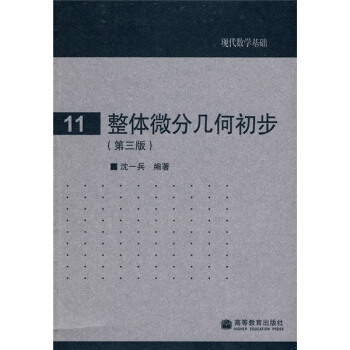
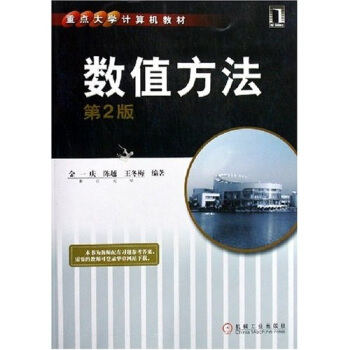
![調和分析基礎教程(第2版)(英文版) [A First Course in Harmonic analysis] pdf epub mobi 電子書 下載](https://pic.windowsfront.com/10184588/0b99c11a-ed7a-49a0-bfc7-41508b70ec8f.jpg)
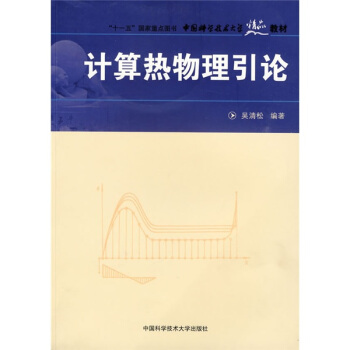

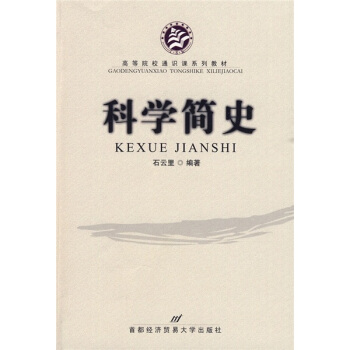
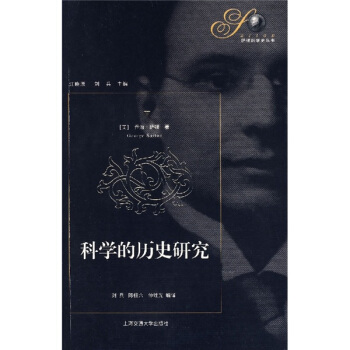
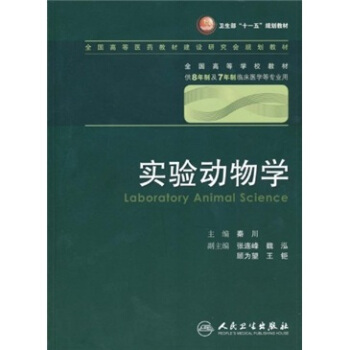
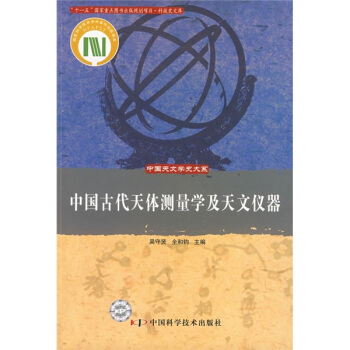


![分子間和錶麵力(第3版) [Intermolecular and Surface Forces] pdf epub mobi 電子書 下載](https://pic.windowsfront.com/10975218/rBEGEk-g4r8IAAAAAAEc-oEAZEMAAAmwANq7DAAAR0S354.jpg)
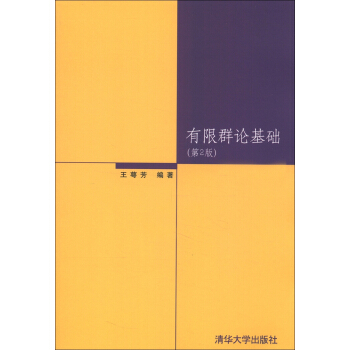
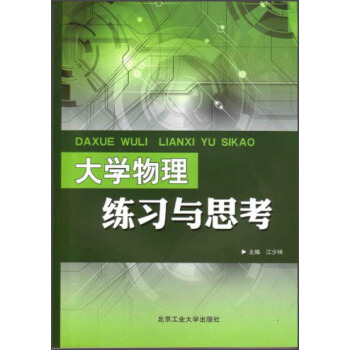
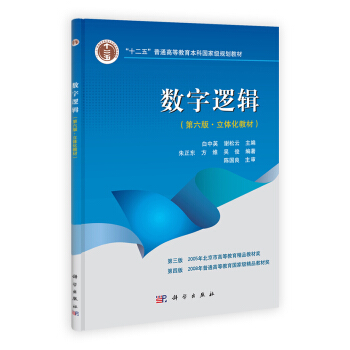
![至美無相:創造、想象與理論物理 [The Beautiful Invisible:Creativity,Imagination,and Theoretical Physics] pdf epub mobi 電子書 下載](https://pic.windowsfront.com/11225373/rBEQYFGMzEoIAAAAAAhWSew5EloAAA5OQNKwocACFZh585.jpg)
